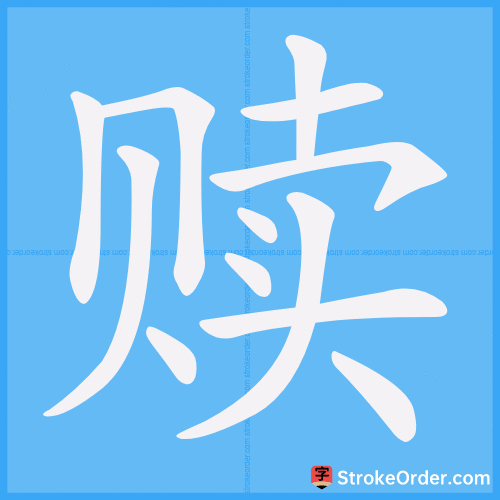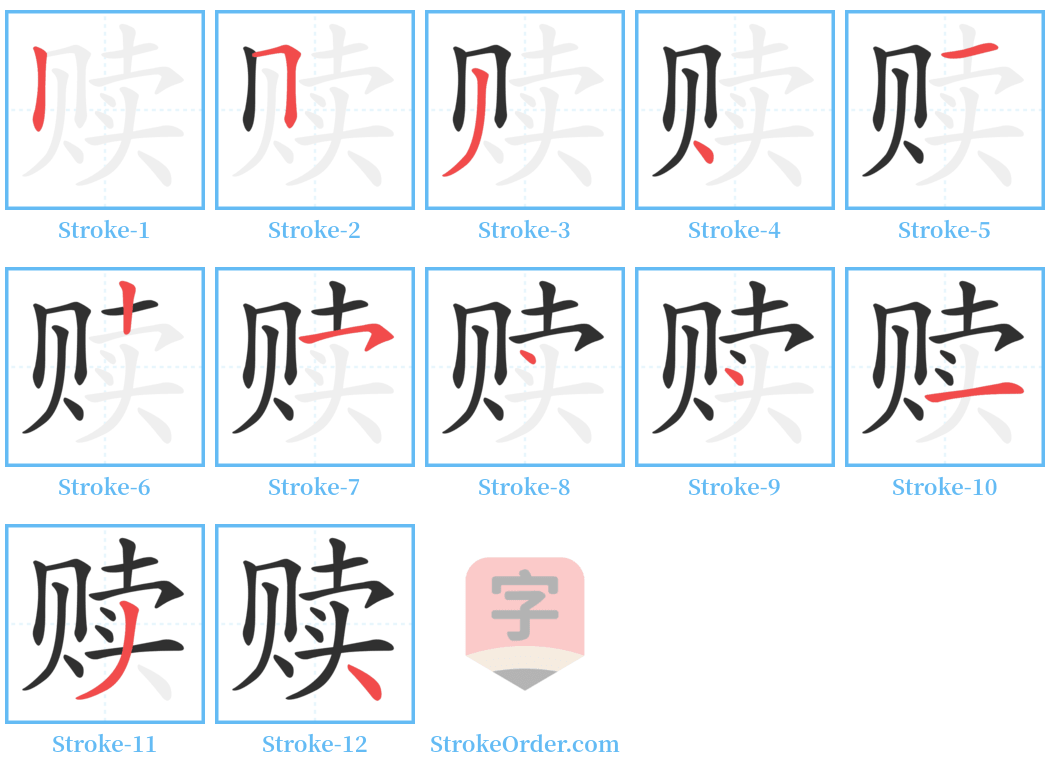赎 Stroke Order
Animated Stroke Order of 赎

Stroke Order Diagrams for 赎

Step-by-Step Handwriting Guide for 赎

Learn to Write Chinese Characters with Video Tutorials
Watch the video of writing the Chinese character "赎", learn the correct stroke order (笔顺) of the character "赎", and master the standard way of writing the character "赎".
Free Printable Handwriting Practice with Stroke Order: 赎
Printable Writing Practice Worksheet of "赎" in Portrait Orientation (Tian Zi Ge)

Printable Writing Practice Worksheet of "赎" in Landscape Orientation (Tian Zi Ge)

Information of 赎
Pinyin
shú
Radical
贝
Strokes
12 strokes
Usage
★★★★★
Definition
redeem / to ransom
赎 (shú)
1. To use property to exchange for collateral.
用财物换回抵押品:
- 赎当 (shú dàng) — ransom.
- 赎身 (shú shēn) — to redeem oneself.
- 赎金 (shú jīn) — ransom money.
- 赎买 (shú mǎi) — to buy back.
2. To offset or make up for a crime through action.
用行动抵销、弥补罪过:
- 立功赎罪 (lì gōng shú zuì) — to perform meritorious deeds to atone for crimes.
本义 (běn yì): To exchange property for a person or collateral.
造字法 (zào zì fǎ): Pictophonetic character; left is the shape, right is the sound.
1. Same as the original meaning ([En.] ransom).
引 (yǐn):
1. From "Zuo Zhuan": The Song people used a hundred chariots and a hundred fine horses to ransom Hua Yuan from Zheng.
2. From "Forgetting the Remembrance": At that time, the rumors became even more numerous, suggesting that he could also be ransomed.
例 (lì):
- 赎生 (shú shēng) — purchasing a living being to release it.
- 赎票 (shú piào) — spending money to redeem a meat ticket taken by bandits.
2. To use property to absolve or mitigate faults ([En.] atone for).
引 (yǐn):
1. From "Han Shu": Qian was to be executed and was ransomed to become a commoner.
例 (lì):
- 赎刑 (shú xíng) — using money to reduce a punishment.
- 赎命 (shú mìng) — using property to rescue a prisoner from punishment.
- 赎锾 (shú huán) — using money to atone for sins; money for atonement.
- 赎钱 (shú qián) — money for redemption.
- 赎银 (shú yín) — silver used for atonement.
- 赎绢 (shú juàn) — silk used for atonement.
- 赎庸 (shú yōng) — paying to excuse from labor.
perform a meritorious service to atone for one's crimes / atone for one's crimes by a good deed / perform merits to atone for one's misdeeds / repent one's evil ways and prove it by one's deeds
Input Method for 赎
Pinyin
shu2
Wubi
mfnd
Cangjie
bojnk
Zhengma
lotg
Four Corner
74884
Unicode
U+8d4e
Same Pronunciation Characters